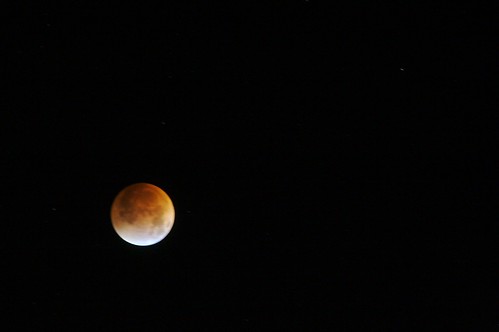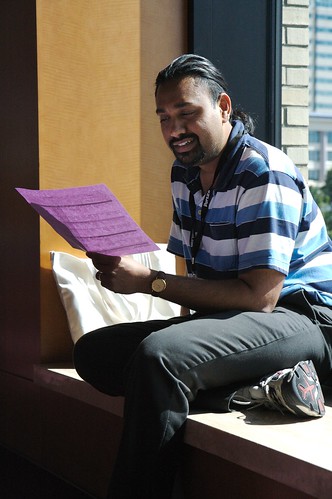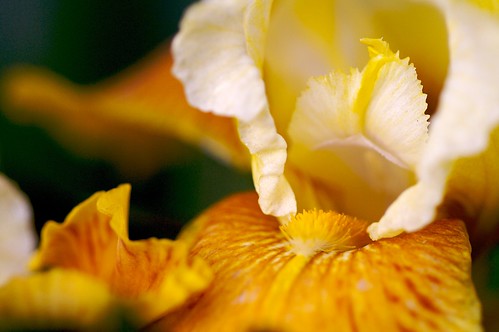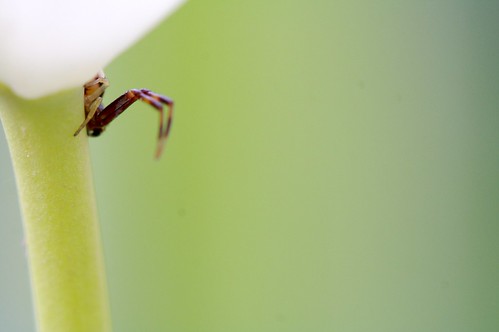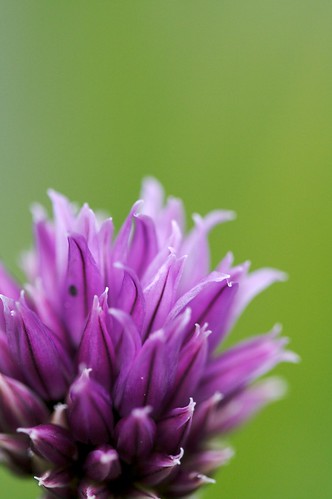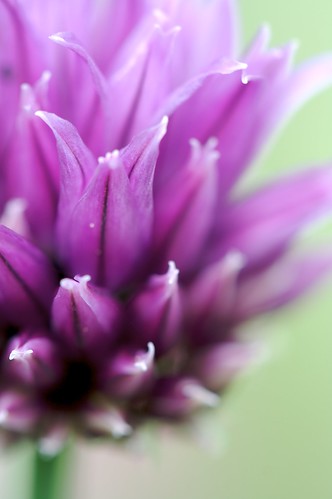Zack Arias has revamped the website for the OneLight workshop. The revamp includes a schedule of OneLight’s from now until April 2008, and a set of discussions forums. The price of the workshop has gone up, but it’s still in the reasonable zone. See these two posts for my thoughts on the OneLight.
Category Archives: photography
Yes, I shot the Eclipse tonight
Another victory for full feeds
During the bar conversation after the Saturday Seattle Strobist Seminar, a bunch of including James Duncan Davidson and Eric Soroos were talking to David Hobby about full feeds on the Strobist site. In particular, we pointed him to John Gruber’s experiment with full feeds on Daring Fireball (preliminary report on John’s experience). So I was very happy to read that David has decided to try a full feed for Strobist as well.
Since David wanted some more power user full feed info, here’s my take on David’s situation.
The argument for full feeds is that it allows a reader to be more efficient because they can digest more information per unit time. At least that is true for me. The other big benefit is that it allows people who want / need to read offline to do so. The question is, “Doesn’t reader efficiency come at the expense of the publisher”? My answer is, no, not if your content is good. In fact, if your content is good, reader efficiency works in your favor. If your content is good, then you as the publisher doen’t want me to have to break my workflow (by switching to a browser, browser tab, or NetNewsWire tab) to determine that the content is good. If I have to break the flow, there’s much less chance that I will do command-shift-P (in NetNewsWire) to pop the your post into Ecto where I can quote it as part of my post (which ought to generate some additional traffic for you). There’s less chance that I will hit command-1 to pop your post’s title and permalink into Twitterific, where it can get pumped into the realtime information junkie network. And there’s less chance that I will hit command-control-‘ to pop your post’s permalink into Pukka where I can quickly tag it and stick it into del.icio.us, where it can be immortalized as important, seen by my del.icio.us network, and pumped into my blog and tumblog. In other words, you make it hard for people like me to help you. Now you might not care about that, and that’s a completely rational choice. But since just about everything in the blogosphere (after your good original content) is about getting flow (which doesn’t just mean inbound clicks) from other people, it seems like a short sighted thing to make it hard for flow to happen.
There are a few other dynamics which I think are relevant to Strobist, which don’t apply to all blogs.
1. Strobist is not just a blog, it is a source of reference materials. If you metered my accesses to the Strobist site, you would see that I access the site much more as a reference site than as a daily blog. I read the daily blogs, but since I am learning something that requires practice, trial and error, and so forth, I am always pulling up old posts (and those Lighting 101 and 102 pulldown menus) are a godsend for that. Which you have to go the site for. Dropping the 1 click that you would have gotten by forcing me to follow from the partial feed is just noise compared to the other volume
2. The advertisers on Strobist aren’t getting the value from the ads. If you make me go to Strobist in Firefox, Adblock pwns you. I never even see your ads. If you want to get value from Strobist, do something that works with what David is doing. Nonetheless, I’ve ordered several times from the Midwest Photo Exchange, not because they advertise on the site, but because they are doing something that works with what David is doing – so well that David actually writes about it. You might think you need an ad, but what you really need is to do something that will get David to write about you. Strobist is becoming a community, and the advertisers / sponsors of the site will get the most value by being a part of the community (see yesterday’s post on Nikon for tips). And that means more than just doing ads.
3. I was less vehement about full feeds that night (and I do love my full feeds) because I don’t think that David’s audience is an RSS enabled audience. The small sample size at the bar bore that out. So full vs partial doesn’t make that much difference, really. I’ve been reading the blogs of some wedding photographers because I think that maybe someday I might like to take a crack at that. But one thing I’ve noticed is that the word on Strobist is out. I see the techniques being mentioned. People see off camera flash pictures and want to know how to do that. And the answer that invariably comes back is Strobist (or occasionally, the OneLight). You can be sure that this is happening in real life, maybe even more so than on line. So the flow net for Strobist has expanded beyond the RSS savvy crowd and into the real world. No amount of full vs partial RSS feed is gonna change that.
But just in case, click here to convince David of the value of a full RSS feed. 🙂
Yet another reason why Nikon’s star seems to be rising
Nikon has done a great job of featuring the work of Flickr users in their Nikon Stunning campaign, and the Nikon Stunning Gallery tag on Flickr. Now they’ve taken it up another notch by introducing the Nikon Digital Learning Center group. It’s a great idea, marred only by a very unpleasant copyright license policy for pictures in the pool. That doesn’t seem to extend to the discussions, so you could still post pictures there in order to gain educational value from the group. That flaw aside, this Nikon seems to be pounding Canon into the ground as far as their use of Flickr. Oh, and their ability to produce an ISO 25,600 DSLR.
Well done, Nikon
I had planned to finish up a post on Erlang tonight, but that got preempted by Nikon’s announcement of the D3, a full frame digital SLR, and the D300, which is a very nice improvement on the D200. The best articles I’ve read so far have been at Rob Galbraith’s site (D3, D300), followed by DPReview (D3, D300). As with the new Canon bodies, the proof will really come when enough regular folks have them in hand to provide real world information. Nikon users have got to be pretty happy today. Canon users as well, since now Canon will really have to accelerate their pace of innovation.
On the new Canon gear
Today Canon announced a pile of new gear. Being relatively new to the photography world, I find it amusing that the anticipation of new Canon/Nikon cameras is like the anticipation of a new Macintosh. In any case, dpreview.com has the best coverage of the new stuff. The highlights include:
- EOS 1Ds Mark III
- EOS 40D
- Powershot G9
- a 14mm f/2.8 L II Lens
- Two new EF-S lenses, the 18-55mm IS and 55-250 f/4-5.6 IS
My commentary on these is going to be somewhat out of order:
1Ds Mk III
After the 1D Mk III, this isn’t much of a surprise. This is a very impressive camera, and is starting to encroach on medium format resolution. Something like this would pretty much be a waste in the hands of someone like me.
14mm f/2.8L II
I am not really a big wide-angle / landscape kind of guy, but a common compaint is that Canon’s wide angle lenses are not that great. It’s nice to see them moving to try and improve in that area.
EF-S 18-55 IS and 55-250 f/4-5.6 IS
With these two lenses, Canon is probably going satisfy a large chuck of the consumer DSLR market. The reach coverage is good, and they are using a new generation of IS that supposedly adds 4 stops, allowing hand holding in more situations. These lenses won’t do much for people looking for f/2.8 apertures to blur backgrounds, but I bet they’ll be pretty affordable. I already have lenses covering these ranges, so I don’t see much appeal here.
Powershot G9
After this weekend’s Strobist seminar, I’m a lot more interested in this that I might have been. This is primarily because point and shoots have electronic shutters, which give you effectively unlimited flash sync speed. When you are trying to knock down the sky or a wall to black, you can’t get enough sync speed. David was toting a G7, and in the G9, the appear to have put back the ability to write RAW files. If only it went to ISO 3200 like the Fuji F20/30.
EOS 40D
This is probably the most relevant camera for me. When I got started, I bought the Digital Rebel XT because it had the same sensor as the 20D without the extras of the 20D. I didn’t know how much use I would get out of it, and I was reluctant to spend a lot of money until I knew whether I was really going to be serious about photography. After a weekend of watching David Hobby shoot, I am very aware that the equipment that I need the most is between my ears. In a day where most people use autofocus, David is still using one hand to both zoom and manually focus his 80-200mm lens. With that in mind, here’s a rundown on the major features of the 40D, with an eye to the things which are most attractive to me (might not be for anyone else):
- 10.1 MP – I don’t really care about the megapixel count – but I do care about some of the improvements that they’ve made to the sensor. I like that the 40D sensor can go to ISO 3200. I don’t like that it requires an expansion. For those situations where I cannot bring a light (ballet recitals, for example), good low noise, hi ISO performance is important. A step up from the XT, but not as big a step as I was hoping for.
- 14 bit DAC – One hopes that this yields an improvement in image quality, but we won’t know till people have them in hand
- Highlight Tone Priority / Hi ISO Noise reductions – These are features taken from the 1D-Mk III, and I’d be happy to have them.
- 6.5 FPS – I don’t seriously shoot sports, so this doesn’t really make much difference to me
- 3″ LCD – this will probably help with focus checks, and it sounds like it will be brighter – it is hard to the the XT display in full sun
- Faster, quieter mirror mechanism – If it really is quieter, that will be nice. There are times when I am very aware that people can hear the mirror slaps as I am shooting. Live view also gets you a super silent mode. But I am running ahead.
- New AF system – This is really important to me. When I bought the XT I didn’t know that there were major differences between the autofocus systems in the XT and the 20D. So a system which is supposedly a reasonable improvement over the 20D system would be great. You could say that I should just learn to manual focus, but it’s very hard to manual focus in the XT viewfinder because it is pretty small.
- AF-ON button – Canon took this feature from the 1D, but it’s not huge deal because I’ve read lots of photographers who remap the “*” button to do the same thing.
- Live View – It seems like the live view on the 40D is even better than that on the 1D MkIII. Since I shoot a lot of macro, I would definitely get some usage out of this feature.
- Viewfinder Magnification and interchangable focusing screens – Canon made a few changes to the viewfinder — they increased the magnification (although not the coverage), and the 40D supports interchangeable focusing screens, so that you could use a focusing screen optimized for manual focusing.
- ISO display in the viewfinder – A long overdue improvement. Its embarrassing how many times I’ve failed to reset the ISO after bumping it too high. Seeing it in the viewfinder will make those mistakes easier to see, and perhaps make it possible to change ISO without taking the camera from the eye.
- “Auto-ISO” – Canon tried to take a page from Nikon and others here, but the Auto-ISO feature on the 40D doesn’t hold a candle to the Nikon Auto-ISO, which is really more like ISO-priority mode. An improvement for low light, but probably not enough.
- Dust cleaning system – The verdict on most dust control systems (with the exception of Olympus) is that hey don’t work.
- User settings on mode dial – I can see this being useful on a per shoot basis, especially if you are moving between different areas.
- Weather resistance – Lots of people made a big deal about weather seals on the D200. I don’t have any L series sealed lenses, so this wouldn’t really do me that much good
- WFT-E3 – The ability to shoot “tethered” but over WiFi as opposed to a cable is pretty interesting. Unfortunately we don’t know how much this controller will cost, and its big brother for the 1D Mk III is really expensive.
For me and anyone else coming from Rebel XT’s there would also be the following benefits:
- Two dials and multicontroller for better ergonomics in manual mode
- RGB Histograms
- Spot metering
- 100,000 cycle shutter – I’m at almost 20,000 on my XT already
- Physical size – although I am small, the XT feels small in my hand
- PC-Sync connector – the first time I worked w/ a studio strobe, it was a hash because I didn’t have a place to plug in a PC sync cord
- Increase in flash sync speed – the XT syncs at 1/200 and the 40D syncs at 1/250. Not a huge jump up, but as good as it gets on Canon — see my comments on the Powershot G9 above.
The 40D looks like a pretty good upgrade from the Rebel XT, especially since I have the EF-S 17-55IS and I am really in love with that lense. However, given some of the problems that Canon has been having with the 1D Mk III focusing system, it seems like a smart buyer would want to wait a little bit to make sure none of those problems have worked their way into the 40D.
Update: added sync speed to the XT -> 40D list.
Seattle Strobist Seminar, August 2007
I spent yesterday over in Seatac at the first of David Hobby’s two Seattle Strobist seminars. I had pretty high expectations for this, because David has set such a high standard on his blog. I also was hoping that David would go at fast pace, but I was prepared for the fact that he might need to slow down enough to keep the material accessible for those just getting started. I was definitely not disappointed on either count. The format of the day is pretty simple. Introductions and a chance for David to find out if people have particular interests, some lecture on theory, and then watching David set up a shoot of a hypothetical important person, using whatever room he’s been given.
There are so many different kinds of content at a seminar like this. There’s the straight “theory content”, which in this case was a fleshing out of the 7 Light Controls that David outlined at the beginning of Lighting 102 David’s style is really interactive, so as he walked us through each of the controls, there were digressions, questions from the participants and demonstrations. \
Another type of content is watching someone put that content into practice. I’ve always found that I learn something by watching someone else shoot. With someone like David, that experience is multiplied because you see how the theory he’s been discussing gets translated in to actual practice. Of course, you can take the theory and other content from David’s site and do that (and a *lot* of people are, as the Strobist Flickr pool will attest), but there are a lot of nuances that you just have to see in order to pick up. A number of other attendees said this to me in asides as we were watching. For the shoot of the important person, David’s goal was to do 4-5 completely different looks, using the exactly same room. You can see exemplars of the various looks in David’s Flickr stream (this is the first). If you look, you’ll see that they are completely different from each other. We saw gelling walls to different colors, making a wall of any color go to white (or black), making a highly reflective surface (projector screen) into a “blowaway” white background, turning a stack of drinking glasses into an abstract background, and more. In addition to the lighting aspects, I also found it instructive to see how David directed a subject’s posing and how he interacted with a subject to build a rapport.
The last kind of content is the hallway track content, which broke down two ways. One reason that I signed up for the seminar, was that I wanted to meet other people local to Seattle who were motivated enough about lighting to put down some money, in the hopes of finding some folks to shoot/talk with. That definitely happened, and there’ll be more on that in another post. The other part of the hallway track was the chance to hang out with David (and a bunch of other people) in the hotel bar after the official time was over. David is as personable and funny in person as he is on the site, and we had a great time with everything from full vs partial RSS feeds, how Knottyy has gone from 0-100 on landscape shooting, to the history of the Seattle underground, to way over my head stuff having to do with LAB color in Photoshop. It was totally a blast.
(ironic for the Strobist to get shot with an on camera pop-up flash – but it was late)
Here are some of my personal takeaways:
- I need to expand my imagination – That’s what is limiting the kinds of shot I want to do, or am willing to try
- I need to just experiment and not be afraid to burn frames – David’s style is very organic and exploratory. You have to be willing to try things and see if they will work. The drinking glass background was a great example of this. Ironically, I seem to need to learn this lesson over and over. Even though the “freeness” of digital frames was what got me back into photography, I realized that I have not been as willing to experiment as I probably should be
- I have more backgrounds than I think I do – Another thing that has been holding me back from shooting more at home (with my abundant supply of models) is feeling like I don’t have any good clean backgrounds to work with. Yesterday’s shoot pretty much demolished that idea.
- 1/4 CTO gels are my friend – I’ve done just about nothing with gels. Well except for the gel that I somehow melted. David is gelling just about all the time.
- Set up thoroughly so you can get people in and out and not burn up your “rapport time” – I’ve actually had some recent experience with this, but hearing David talk about various shoots that he’s done really drove this point home.
- I need to build some grids and gobos. I built a set of the cereal box snoots, and I’ve used them for a few shots, but I don’t like the rectangular shape of the light, so I’ve laid off of them. But I knew after the OneLight that I really like grids, and seeing David’s grids just pushed me over the edge.
- Cross light, cross light, cross light – I have learned to think in terms of balancing lights, but I haven’t really internalized looking for cross lighting situations.
Strobist vs OneLight
At the moment, I am probably the only person in the world who has attended both Zack Aria’s OneLight workshop and David Hobby’s Strobist Seminar, so a comparison is inevitable. Heck, David was asking me about it in the bar.
The OneLight is a completely self contained workshop. Zack does not assume that you have any prior experience with off camera lighting, which makes the OneLight perfect if workshops are a good learning style for you. You can start from nothing and get the basics all in one day. One major advantage of the OneLight is that after a full day of lecture and theory, you spend another 4-5 hours doing hands on shooting. Zack gets a model, and he and the workshop participants walk the model around and shoot using the stuff that you learned. Zack is right there to look at your images, give you feedback or help, and he swears not to go home until all your questions are answered. And he means it. Zack’s background is a music photographer, so you are also get his view of the photography world. I personally found that to be refreshing and interesting. Zack also had a different take on equipment, which I found interesting. In particular, I never would have found out about the awesome Westcott Apollo series of umbrella mount softboxes if it hadn’t been for the OneLight.
The Strobist Seminar is a slightly different animal because it also has the Strobist blog, and the enormous Strobist community around it. That means that David can leverage those things to make the seminar work well, both before (he asked some of the novices to at least read through Lighting 101), and after (you know there will be massive Flickr threads) the event. You will definitely get more out of the seminar if you have at least looked through the site. The one thing that David doesn’t do is take you shooting and help you out and give you feedback. Many of my fellow attendees expressed a desire to do that. Doing two seminars back to back makes that a tough proposition for David, and it would raise the cost because of the need to hire a model.
In the end, I spent the money for both workshops, and I’m not sorry about either one. When I took the OneLight, I had done David’s lighting bootcamp, but I still found that I learned things, and the experience of watching/shooting with someone experienced was well worth it. I would say that the Strobist workshop is stronger on the theory, and that the only real lack is the shooting part. I’d jump at the chance to participate in a David mentored DINFOS type shoot. In the end, I don’t think you can really go wrong with either one. It’s probably more a question of getting to one in your area. I was super fortunate that both of these came to Seattle this year. As photo workshops go, they are both pretty inexpensive – both of these dudes could be charging more. In fact, I mentioned this to David yesterday, and he told me that he didn’t feel it was in keeping with the spirit of the site to charge more, and he assured me that eating was not going to be a problem for him any time soon. I love a man who can live by his principles.
Update: I forgot to mention that there are a few setup photos in my Flickr stream…
Second Cameraversary
Last year I missed my Cameraversary due to the madness of OSCON week. I got my camera a week or two before OSCON 2005, and the conference was the first chance that I really to give the thing a workout, so I have sort of a sentimental thing with OSCON and photography. In fact, you can sort of trace my history by representative shots from OSCON.
This 2005 photo was an oops. It looks cool, but it looks that way because I forgot to change the white balance settings. Sometimes it works out that way.
This has to be the representative photo for OSCON 2006.
I guess in about a week, we’ll see what we get for OSCON 2007.
In the last 12 months, I’ve done a couple of thingsf that I’ve never done before (photographically). Back in December, I shot a sizable portion of a wedding, including all the getting ready stuff (helps when your family is in the wedding). This spring I took a workshop, Zack Arias’ amazing OneLight workshop, which is an unusual thing for me to do. I’m pretty much a learn it yourself kind of guy, but it was worthwhile. Earlier this month the local newspaper picked up one of my photos (login now required, wah. Original picture here.) and sent me a check in exchange.
I am also starting to learn my way (slowly) around Photoshop. I’ve had a fairly big change of heart regarding post processing, especially when compared to two years ago. One of the things I am looking forward to at OSCON is picking Duncan’s brain about Lightroom, since he’s already made the switch. Better integration with Photoshop is one of the reasons I’m considering switching. Curves is another. During our recent family vacation, I took a number of HDR images (yeah, posting soon, but not till after OSCON), and that pretty much means you are working in Photoshop. So for the first time I actually used curves and saw the difference compared to Aperture’s quarter toned levels control.
I recently finished “Light: Science and Magic“, which David Hobby is recommending as supplemental reading for Lighting 102, it’s really worthwhile (if you can find a copy). I’ll post a review and add it to the book list some time after OSCON.
Congratulations to the Strobist, Again!
David Hobby, the author of the Strobist blog, is taking a leave of absence from his “professional” job in order to spend more time with his family, and try to make the most of the opportunities presented to him by the amazing uptake of Strobist. I am glad to see that he’s worked out an arrangement that lets him see if Strobist has wings. I, and many others have learned a huge amount from David, and I am sure that this will be an exciting year for him (and us, by extension).
If you aren’t following the Lighting 102 series, you really owe it to yourself to do so. In the second unit, David filled in the one area that Zack Arias’s OneLight workshop didn’t cover that well, the impact of flash to subject distance. As always, no only did David show how it worked, but he explained it way better than just regurgitating the inverse square law: “Light has depth of field.” Great explanation.
I haven’t shot the assignments yet, having been on an “off the grid” vacation for a week (and now trying to dig out after that), but I am anxious to do so. We shot a variation of the first assignment on angle, at the OneLight, so I don’t feel quite so behind. Here’s one of the OneLight angle shots:
24 Hours of Flickr…
I’ve finally dug out a bit from several really busy weeks at work, so I thought I’d celebrate by sharing my candidates for Flickr’s “24 Hours of Flickr” event. I need to pick one of these to submit, so comments are very welcome.
